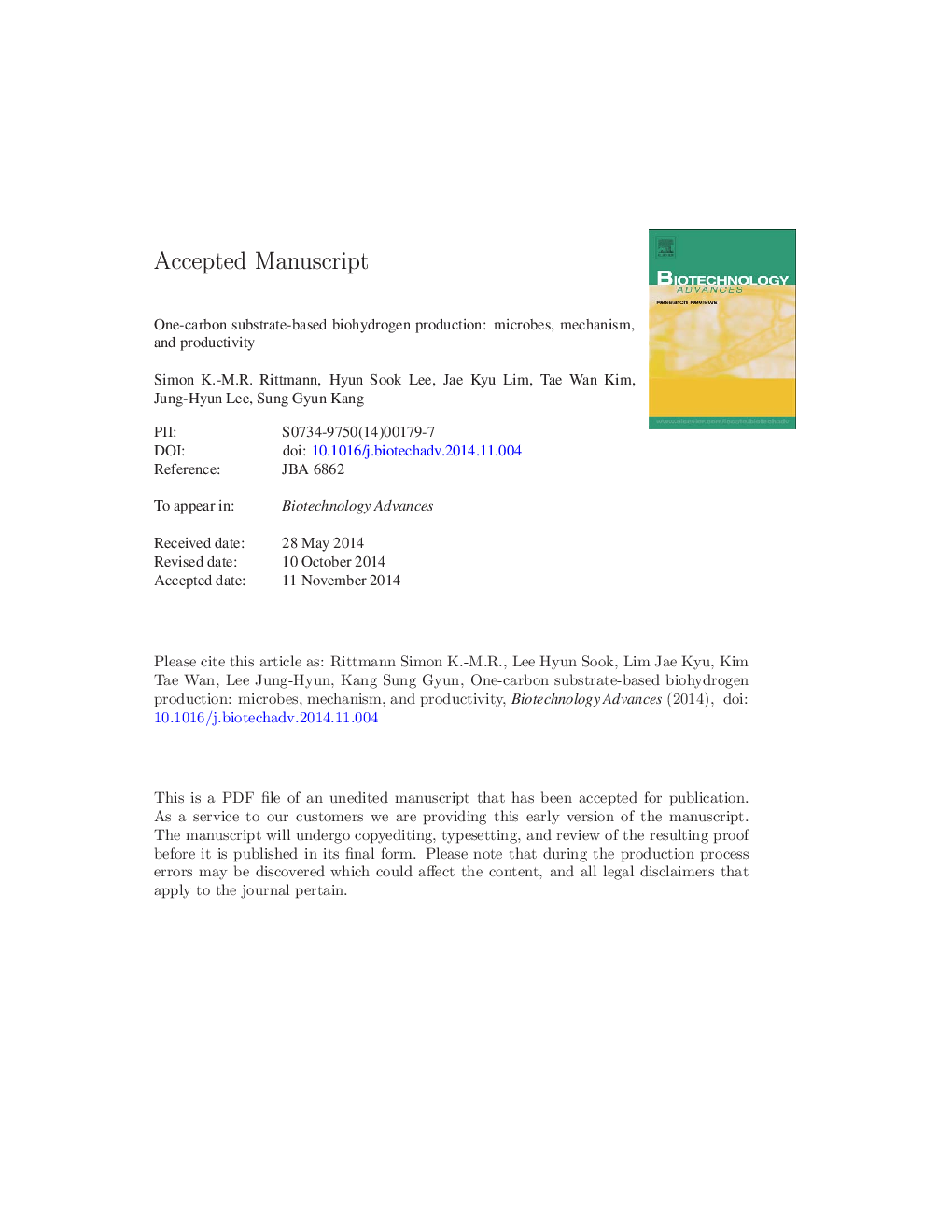| Article ID | Journal | Published Year | Pages | File Type |
|---|---|---|---|---|
| 10231489 | Biotechnology Advances | 2015 | 52 Pages |
Abstract
Among four basic mechanisms for biological hydrogen (H2) production, dark fermentation has been considered to show the highest hydrogen evolution rate (HER). H2 production from one-carbon (C1) compounds such as formate and carbon monoxide (CO) is promising because formate is an efficient H2 carrier, and the utilization of CO-containing syngas or industrial waste gas may render the industrial biohydrogen production process cost-effective. A variety of microbes with the formate hydrogen lyase (FHL) system have been identified from phylogenetically diverse groups of archaea and bacteria, and numerous efforts have been undertaken to improve the HER for formate through strain optimization and bioprocess development. CO-dependent H2 production has been investigated to enhance the H2 productivity of various carboxydotrophs via an increase in CO gas-liquid mass transfer rates and the construction of genetically modified strains. Hydrogenogenic CO-conversion has been applied to syngas and by-product gas of the steel-mill process, and this low-cost feedstock has shown to be promising in the production of biomass and H2. Here, we focus on recent advances in the isolation of novel phylogenetic groups utilizing formate or CO, the remarkable genetic engineering that enhances H2 productivity, and the practical implementation of H2 production from C1 substrates.
Related Topics
Physical Sciences and Engineering
Chemical Engineering
Bioengineering
Authors
Simon K.-M.R. Rittmann, Hyun Sook Lee, Jae Kyu Lim, Tae Wan Kim, Jung-Hyun Lee, Sung Gyun Kang,
